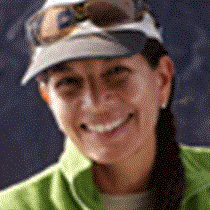Española Island
Our first full day on the islands was of discovery and exploration. We spent our day on the southeastern island of Española, formerly known as Hood. In the morning we visited Gardner Bay, where many options or a combination of them, were offered to our guests. Exploration of the underwater by snorkeling, discovery of the shores by kayak, or a stroll along a dazzling white beach among dozens of resting and cavorting sea lions.
In the afternoon we visited another part of the island, Punta Suarez, one of the richest wildlife locations in Galápagos. Right at the disembarkation point, we were greeted by many marine iguanas and by sea lions, some of them pups of only few days old. Further along the trail we saw the unique and endemic species of mockingbird, lava lizards, and doves, as well as three different species of Darwin finches. The trail took us inland where there was a combination of native and endemic species of plants, all them grey and very dry, since we are at the end of the dry and cold season, named “garua” season. While admiring these unique species, soon we arrived to the nesting site of the waved albatrosses, to find many young ones that were showing their juvenile plumage and their desire to fly. Some adults were displaying their last courting rituals, which very often assure the next breeding season with the same partner. Every year the entire population of these birds, around 25,000, arrive to Española Island by mid-March to start their breeding cycle, and leave the island by the end of December or beginning of January when they go to the coasts of Chile and Peru to their feeding grounds. These magnificent birds display one of the most spectacular courtship rituals among seabirds, and today we were lucky enough to see few couple engaged of this ritual.
Waved albatrosses, Galápagos hawks, Nazca boobies, and blue-footed boobies were along the trail that took us to the famous blowhole and then further in into the open plateau of the island where hundreds of these birds nest.
The trail was the most arduous one of the week, lot of boulders, but the rewards were many.
We saw what Charles Darwin saw back on 1835 and perhaps even more…




